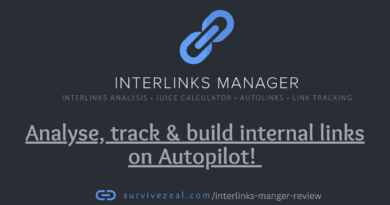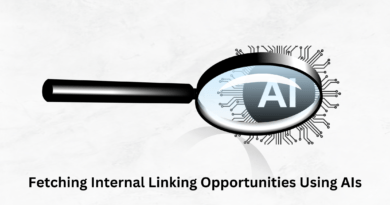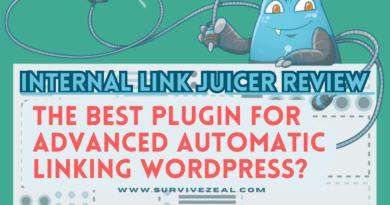LinkBot — Automate Internal Linking With AI (Reviewed)
If you’ve been searching for a smarter way to handle internal linking on WordPress, you’ve probably come across LinkBot.
It’s one of the newer tools in the space, powered by AI and built to automate one of the most time-consuming SEO tasks.
In this review, I’ll walk you through what LinkBot is, how it works, and whether it’s worth using compared to other tools like Linksy or Link Whisper.
What’s LinkBot’s internal linking tool?
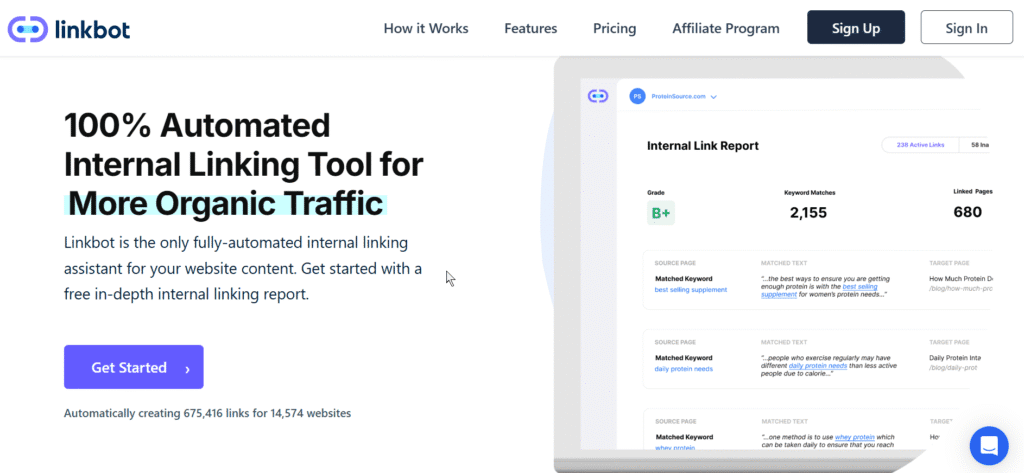
LinkBot is an AI-powered, cloud-based internal linking service you integrate into your WordPress (or any website) by copying and pasting a tiny piece of code or using a light plugin.
It automatically scans your content, finds the most valuable internal link opportunities, and adds them for you from a central dashboard.
LinkBot analyzes your sitemap to identify orphaned or underlinked pages, suggests contextually relevant links, and even tracks which pages get indexed after linking.
Unlike internal-link plugins that run fully inside WordPress, LinkBot operates in the cloud but sends the improvements back to your site, all without slowing it down.
You approve what matters, and LinkBot handles the rest.
Pro tip: Using the best tools unlocks wonderful possibilities. Check the masterpieces — best AI-powered internal linking tools (LLM power) OR best internal linking plugins (for WP users).
Features to expect from a typical Internal Linking Tool
Here are the features that are commonly found on internal link-building tools.
Outbound internal link suggestion
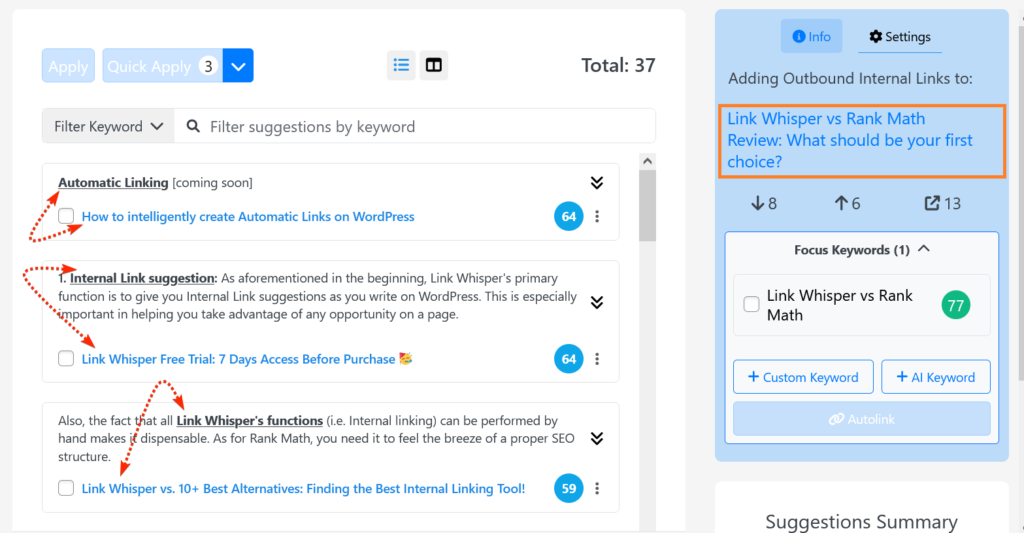
This is a common feature found in these tools (both dedicated ones and those offering internal link automation as an addition to their main features). Outbound Link suggestion takes a particular page into consideration, especially as you write — It lists out every keyword opportunity found along with matchable pages that can connect them.
Let’s come again.
Assuming an article “A” which you have written, and the only work left is internal linking. The outbound link suggestion lets you find phrases from your article; it then pairs them with relevant pages on your site.
Normally, the suggested anchor texts are displayed in one column, and the suggested pages in the other. A single tick (✔️) is required from you to make them live on your site.
Certain tools also give you amazing flexibility such as — edit the suggested phrase to meet your need, replace the proposed page with another.
Inbound internal link suggestion
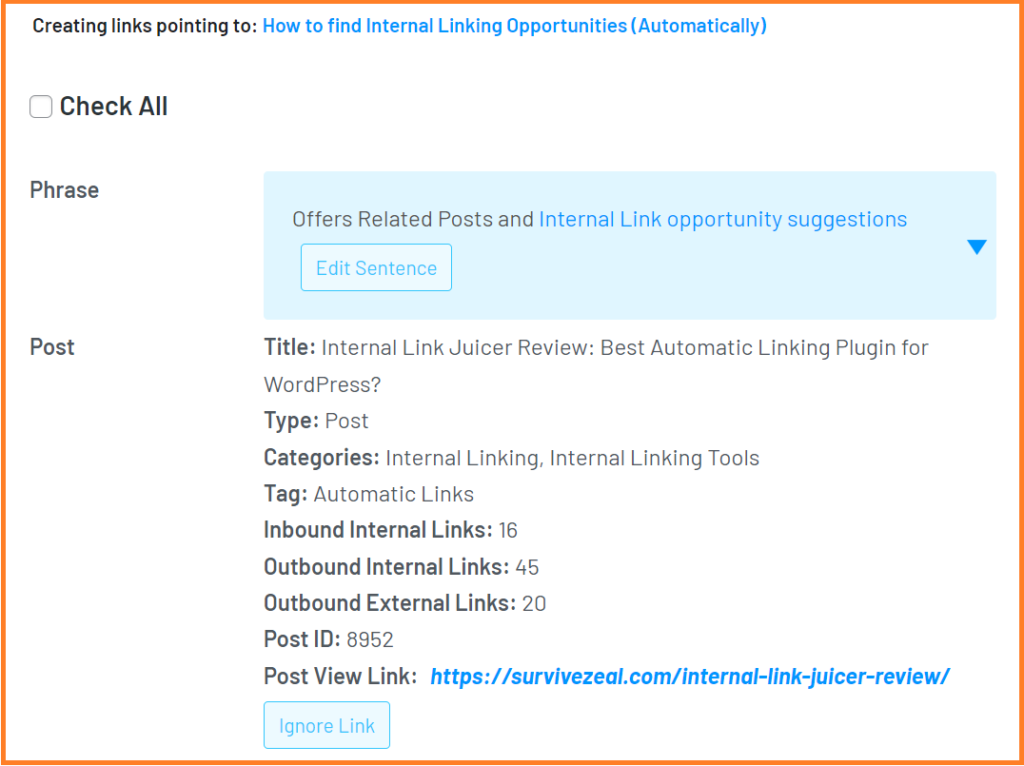
As opposed to the first, inbound interlink suggestion does the main job — It stops you from visiting older content for internal linking after releasing a new post.
Yup… You no longer need to comb through tons of pages searching for internal link opportunities.
Through various mechanisms (mainly AI), your older content is accessed for new internal links. You only need to check boxes — avoid, reject, tweak, or apply… to have links created.
Internal link reports and analysis
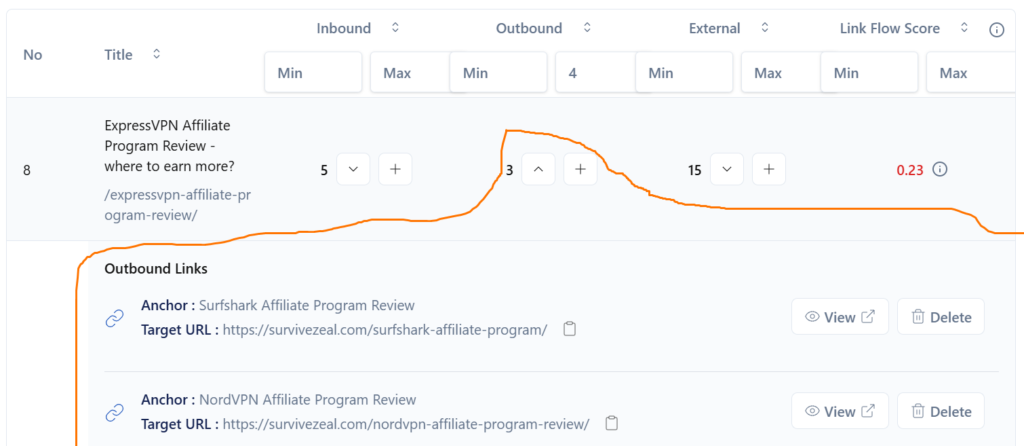
Have you ever wondered how to find internal links on a page? Or more tricky — how to find links pointing to a particular page?
Internal link reports and analysis have got you!
Internal link reports let you see the number of Inbound internal links, outbound internal links, and external links for each of your pages.
Internal link analysis goes deeper to get the URLs and anchor texts of all the hyperlinks in your content.
You can see this as a primary internal link Audit.
Keyword-based linking
Keyword-based linking, just from the name alone, is the conversion of selected phrases to links automatically.
You just need to provide the keyword with respect to the target page URL, then sit back to watch the connection go.
Top-tier tools like Linksy AI and Link Whisper offer more flexibility like the ability to review the automatic links before they are finally placed. Through pre-reviewing, links that are off-point are taken care of, leading to intentional automation.
LinkBot Pricing
LinkBot likewise Link Whisper has a free trial version.
You can access all the Plugin has to offer within 14 days, and if it meets your need, you can upgrade.
Monthly Pricing
- $49/month for Starter (up to 1,000 URLs, 5 properties, 1 user)
- $99/month for Professional (up to 5,000 URLs, 10–15 properties, 5 users)
- $299/month for Business (up to 50,000 URLs, 25–50 properties, unlimited users)
Yearly Pricing (estimated at 30% savings)
- $411/year for Starter (equivalent to $49/mo)
- $838/year for Professional (equivalent to $99/mo)
- $2,507/year for Business (equivalent to $299/mo)
>>> Try LinkBot free for 14 days
LinkBot Pros and Cons
LinkBot and other internal linking plugins come with a range of upsides and downsides.
While we haven’t fully used LinkBot, we already have some experience with internal linking automation (especially with the leading tools).
Here are pros and cons of using an internal linking tool.
LinkBot Pros—
- Saved time
- Saved stress
- Leveraged opportunity.
LinkBot Cons—
- Can suggest or build irrelevant links at times
- Even with LLM power, Manual internal linking beats for relevancy.
LinkBot Alternatives
Are you looking for an alternative to the LinkBot internal linking tool?
The application is not all alone in the industry. In fact, there are tools that have existed before it. Some of them made it to the leading tools list.
Let’s explore them —
Note: You can check their reviews: Link Whisper review, Linksy AI review, LinkBoss review, Linkter AI review, SEO juice review.
- Link Whisper, best overall | best for semi-automation (more relevant links)
- Linksy plugin, next choice | great at bulk linking, full automation
- LinkBoss, best for a SaaS option for WordPress
- Linkter AI, a new-player in the industry existing as a WordPress plugin (not fully tested yet)
- SEO Juice, another new-player in the industry (not fully tested yet! but works for all CMS allegedly)
Access superior features with top internal linking tools
With the leading internal linking tools (ai-powered), you can get better features and output.
Top tools leverage the power of Large language models to offer better internal link suggestions and make the whole work greater. Top tools connect to other applications like GSC and SEO tools (to fetch relevant keywords for page).
Plus, the best tools always provide semi-automation options and not just FULL automation. This helps users switch to the version they want at any time.
- Linksy AI – best for features, best for a WordPress plugin (LLM connection type: preset)
- Link Whisper – best plugin overall for internal linking, best for shopify (LLM connection type: manual)
- LinkBoss – best for a SaaS option for WordPress (LLM connection type: preset)
- SEO juice – best for other CMS (platform-agnostic)
LLM-powered internal linking automation
Connecting to OpenAI or any other LLM makes an internal linking tool smart.
Mere internal link suggestions that are driven by NLP mostly don’t come up with relevant results. But thanks to LLM integration — It has revolutionized internal linking automation.
As a result, those who are still hesitant to automate interlinking are denying themselves some sort of “freed time and stress”.
AI internal linking tools connect to LLMs in two ways:
Some tools handle everything internally, managing the connection and prompts on their own.
Others give users the freedom to manage the LLM connection manually — requiring the user to provide their own API key to make it work.
Ability to create internal link opportunities automatically
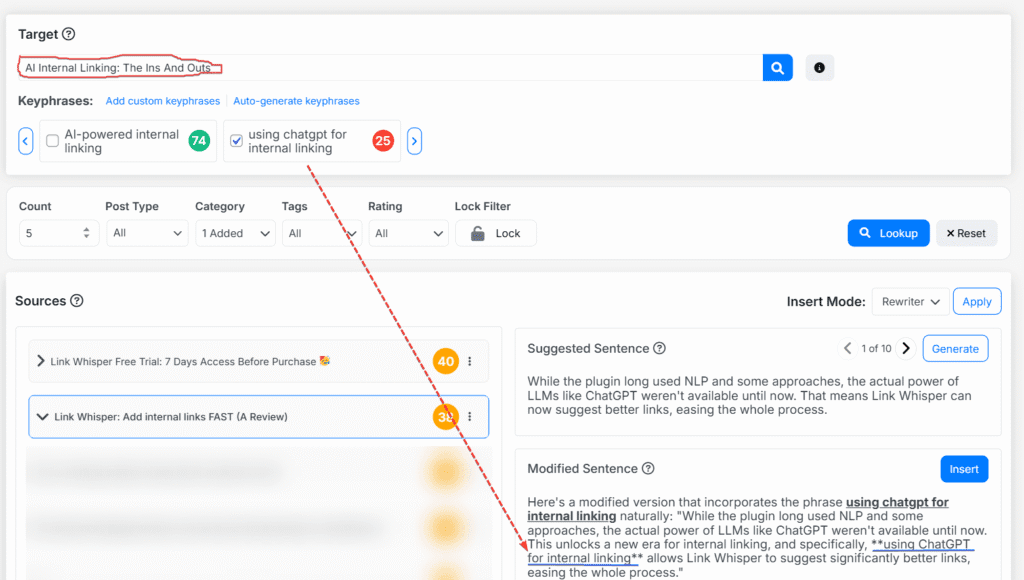
At times, internal linking opportunities may not exist in your content. This can be because you have not covered the topic a lot.
The usual workaround to this — is revisiting your pages and crafting the link-able phrases manually.
But with the power of AI, close sentences can be written for the opportunity of a target keyword. Subsequently, new internal links will be created from there.
Another possible way AI can do this — is adding an extra section on your post. It might be an additional FAQ or any related topic.
Ability to review autolinks before placement
Another cool feature not commonly found in internal linking tools is the ability to preview autolinks-to-be before they actually become hyperlinks.
The portion of your text (two or three lines of sentence) are pulled together with the target phrase. This way, you know beforehand where the links will go live and can take any necessary action.
Conclusion
Tools like LinkBot simplifies the process of internal linking.
The main aim is always to fasten and save the 10 hrs of work.
By using an internal linking tool, you hand over some tasks like — finding opportunities, automating hyperlinking for some keywords, and internal link optimization to an AI that lifts the load.
It’s worth noting that LinkBot and other internal linking plugins can sometimes fail to ease the process. The major culprits are content unrelatedness (i.e., when you start a new topic), and AI hallucination.
Therefore, an internal linking tool should be seen as an assistant, NOT a complete takeover!
Pro tip: Using the best tools unlocks wonderful possibilities. Check the masterpieces — best AI-powered internal linking tools (LLM power) OR best internal linking plugins (for WP users).
Visit LinkBot and save (14 days free)!
